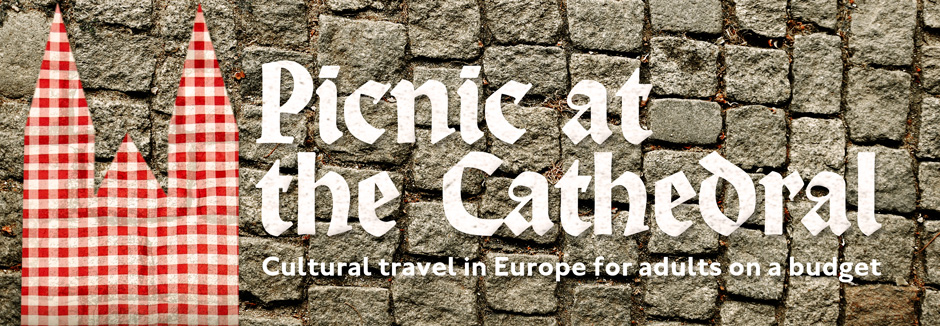Last week as we were walking about in the rain in Santiago de Compostela looking for a post office, we were stopped by the leader of a tour group. “Excuse me” he said politely “I see that you are pilgrims. My group would like to see your pilgrim’s passport stamps. Could you please show them to us?” Twenty eager faces closed in, cameras at the ready. “Um…errr,” I mumbled, “I’m sorry, we don’t have those….sorry.” And we continued down the wet sidewalk.
Pilgrims of the Camino de Santiago, which has been a continually active Christian pilgrimage route since the middle ages, walk across Northern Spain to the Cathedral of Santiago de Compostela, where the relics of St. James are interred. Pilgrims carry a document, called a credential, that is stamped like a passport at various way stations along the Camino route. The stamps allow pilgrims to sleep in inexpensive hostels and give them access to discounted meals and reduced fees at museums and churches. We didn’t have the stamped credentials because we weren’t “real” pilgrims.
We were not real Camino pilgrims because we didn’t not spend weeks or even months walking from as far away as Northern France to Santiago de Compostela. The Camino is an intense physical and emotional commitment, a commitment of time away from busy world. Judging by the beatific faces of the pilgrims we saw as they reached the end of their long journey, the spiritual reward is equally intense.
We were not real pilgrims, though perhaps our muddy shoes and waterlogged backpacks made a convincing impersonation. Each previous day of our trip we had wandered about outdoors and in freezing cold churches, up though the Pyrenees, through the Basque region, across Castile and León, and finally into Galicia, though rain, snow, apocalyptic hail and two uncomfortably close lightening strikes.
We were not real pilgrims, though it’s possible our triumphant faces were a close facsimile of those who held the real credentials. Our “Camino” had continued off and on for five years. Ours was a cultural Camino, a gluttony of art and architecture as we followed the UNESCO World Heritage Route of Santiago de Compostela. We took our time exploring the rich variety of buildings, relics and civil engineering that developed along the way of the Camino, often spending the entire day in and around one cathedral. We did a lot of walking, sure, but mostly we cobbled it together with public transportation and a few strategically timed taxis.
We attended the Pilgrim’s Mass at the Cathedral of Santiago de Compostela, but we hadn’t registered at the pilgrim’s office so our names and the starting point of our pilgrimage were not read during the service. Since I couldn’t understand the Spanish mass, I recited in my head the names of my favorite Camino churches we’d visited in the past five years: Saint-Foy Abbey in Conques, Cathédrale St-Lazare in Autun, Saint-Pierre Abbey in Moissac, Abbey Sainte-Marie-Madeleine in Vézelay, and Church of St. Martin in Fromista.
After the pilgrim’s mass ended we completed the Camino along with the real pilgrims by hugging the golden, gem encrusted statue of St. James and then kneeling in front of his tomb. Pilgrims can request favors from St. James, seek atonement for sins, or just give thanks. When it was my turn to kneel in front his silver casket, I had no requests, but I thanked St. James earnestly for inspiring so many great buildings. My gratitude was whole-hearted and sincere. I wasn’t faking it.
Kneeling at the tomb of St. James.
Pilgrim’s abandoned walking sticks at the Pilgrim’s office in Santiago de Compostela.




What a wonderful and inspiring post. We haven’t been to Santiago de Compostela yet, but we hope to make it there some day. Like you, we may try to cobble together our own “cultural Camino” along the way. That might even include checking out the bowling God in Burgos Cathedral!
LikeLike
Thanks so much thereliquarian! I hope you do make a camino since I’d enjoy reading your posts so much. I was thinking about you when we were in Leon, at Basilica of San Isidoro. There are OUTSTANDING reliquaries inside (no pictures were allowed but perhaps you can google it.) Also, the cathedral in Oviedo has a great room of historic reliquaries.
LikeLike